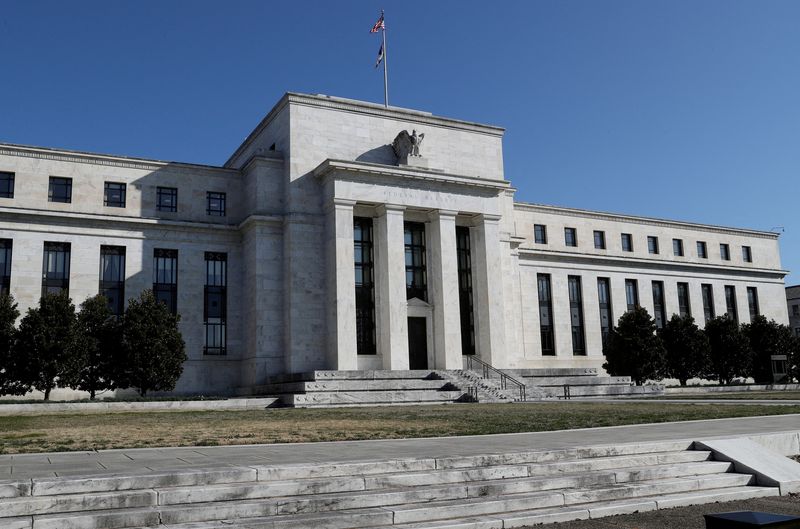Select Language

By Lindsay (NYSE:LNN) Dunsmuir
(Reuters) -U.S. economic activity continued to expand from early April through mid-May but firms grew more downbeat about the future amid weakening consumer demand while inflation continued to increase at a modest pace, a U.S. Federal Reserve survey showed on Wednesday, as central bankers mull how long they will need to keep interest rates at current levels.
The U.S. central bank's latest temperature check on the health of the economy also showed that the jobs market continues to gradually cool back down toward more normalized levels.
The survey, released roughly every six weeks, comes as policymakers remain uncertain on when to start a rate-cutting cycle after holding interest rates in the range of 5.25% to 5.50% for the past 10 months. They are keenly watching trends in activity, jobs and pricing pressures in order to make their decision.
"National economic activity continued to expand...however, conditions varied across industries and districts," the Fed said in its survey, known as the "Beige Book," which polled business contacts across the central bank's 12 districts through May 20. "Overall outlooks grew somewhat more pessimistic amid reports of rising uncertainty and greater downside risk."
Waning consumer demand was an ongoing concern for many firms, the Dallas Fed noted, while the continued conflict in the Middle East and further geopolitical tensions across the world were also cited as downside risks.
Most Fed districts reported slight or modest growth in economic activity, while two noted no change, the survey said. In particular, retail spending was described as flat to up slightly, echoing recent data that indicated consumers are pulling back on spending.
The Fed's benchmark interest rate is set to remain unchanged at the next policy meeting on June 11-12 and Fed officials, while all but ruling out another rate hike, have indicated they need consistent encouraging inflation data over a number of months before lowering borrowing costs after being stung by bigger-than expected price increases the first three months of the year.
While that worrying trend seems to have reversed in April inflation currently remains, by the Fed's preferred measure, almost a percentage point higher than its 2% target rate. The latest reading of the Fed's key inflation gauge is scheduled for release on Friday.
MORE SENSITIVE CONSUMERS
Contacts in most Fed districts noted consumers were pushing back against additional price increases. One large clothing retailer told the Boston Fed it planned to implement "modest price reductions on selected items in early fall in a bid to boost sales."
However, there are also some signs inflation pressures may be reaccelerating again. "Many districts observed a continued increase in input costs," the report said. A separate survey earlier this month showed manufacturers in May reported a surge in prices for a range of inputs, suggesting that goods inflation could pick up in the months ahead.
"Consumers are becoming more price-conscious, likely putting pressure on profit margins. We should expect more discounts and incentives as some consumers struggle with persistently high prices," said Jeffrey Roach, chief economist at LPL Financial (NASDAQ:LPLA) following the release of the report.
For Fed officials there was welcome news on the labor market, with employment described as rising at a slight pace overall, better labor availability across a majority of Fed districts and less employee turnover.
For example, a winery in central Minnesota said that it received "a lot more applications for part-time (and) seasonal workers this year, which is very encouraging," the Minneapolis Fed reported.
Wage growth continued to grow mostly at a moderate pace but several Fed districts reported firms telling them it was now at pre-pandemic historical averages or was normalizing toward those rates.
U.S. job gains were the fewest in six months in April and the increase in annual wages fell below 4.0% for the first time in nearly three years, although the labor market remains fairly tight.

